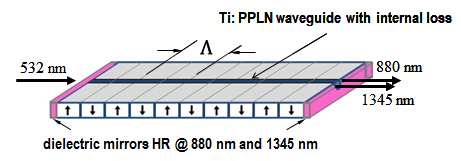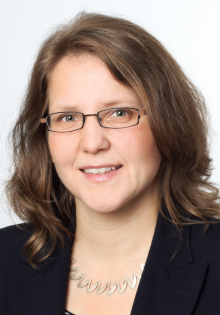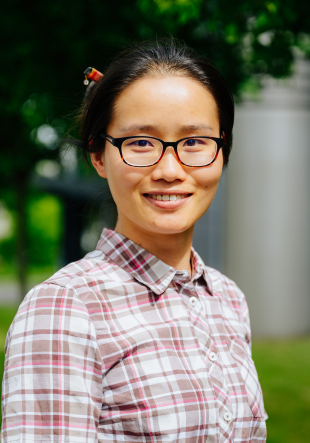Interfaces
Currently, the most prominent ideas in Quantum Information Processing (QIP) rely on the transmission of quantum states in the optical range, thus photons are used as quantum information carriers ('flying qubits'). In many cases, however, the optical frequencies at which quantum information can be generated, stored or processed locally differ substantially from each other and more importantly from the spectral range of optimal transmission in optical fibers. While atoms, ions and other solid state systems used for that purpose have transitions in the UV- and visible range, efficient optical transmission in glass fibers requires wavelengths in the infrared spectral region (telecommunication wavelengths). In this way the attenuation in glass fibers, imposes a fundamental limitation on long distance photonic state transfer. This limitation can however be circumvented by converting the quantum state to a different and less lossy wavelength prior to optical fiber transmission.
Frequency Conversion between UV and IR - change the color, keep the state
We aim at providing a quantum information interface between Yb+ ions and telecommunication wavelengths by second order nonlinear interactions in tailored integrated optics.
It has been shown that an interface allowing for the frequency conversion between different wavelengths whilst preserving other quantum properties (e.g. entanglement) of the photonic state can generally be built. Frequency conversion between an input mode at frequency ωin and an output mode at ωout can be accomplished by mixing a state in the input mode inside a nonlinear χ(2)-material with a strong classical field at ωpump, where ωout lies at the sum- or difference frequency
ωout = ωin ± ωpump.
The creation of this interface involves challenges in various technological aspects. The phase matching for the aspired process requires QPM-periods of only a few micrometers. We are thus continuously striving to further improve our lithographic and field-assisted poling techniques. Furthermore, the efficiency of the process is not only determined by the material properties, geometry and the intensity of the pump field, but also dependent on the spatial overlapp between the modes. In order to maximize the conversion efficiency, we use quasi-phase-matching in PPKTP waveguides.
We are currently especially interested in an interface between Yb+ Ions, with an optical transition wavelength of 369.5 nm. Consisting of a waveguide with χ(2)nonlinearity which is pumped with a strong cw-field in the green spectral region (e.g. by an Ar-Ion-Laser at 514.5 nm) such an interface would allow for the bidirectional conversion of a quantum state between those two broadly separated wavelength, and the telecommunications O-band around 1310 nm.
Narrowband photon pair source
Narrowband two-color photon pairs are required in quantum repeater to overcome current limitations of long distance quantum communication. One photon is to address the visible or near infrared absorption line of the storage medium in a quantum memory (QM) and the other can be transmitted over a telecommunication fiber network. The practical prospect of quantum communication and information processing relies on sophisticated single photon pairs which feature controllable waveform, narrow spectrum, excellent purity, fiber compatibility and miniaturized design. One promising approach to generate such narrowband photon pairs is to use resonance enhancement of PDC within a resonant waveguide.
As partner within the European QuReP project ( www.quantumrepeaters.eu ) we are currently developing integrated PDC sources which match the absorption lines of Nd-based ( λ ≈ 880nm) and Tm-based ( λ ≈ 793nm) quantum memories.
A periodically poled lithium niobate (PPLN) waveguide with dielectric mirrors deposited on its end-faces has been demonstrated to integrated single-longitudinal-mode non-degenerate narrowband photon pair source. The source consists of a Ti-indiffused periodically poled lithium niobate (Ti:PPLN) waveguide and dielectric mirrors deposited on the waveguide end-faces, as shown in Fig.2. The first-order type II PDC phase-matching was chosen to generate TE-polarized signal photons around 880 nm and TM-polarized photons around 1345 nm when pumped at 532 nm in TE-polarization. It has been obtained when the poling period is around 4.4 µm.
Photon pairs combined quantum memories and quantum telecom fiber communications are generated. Clustering in this dispersive cavity restricts the whole conversion spectrum to one single-longitudinal-mode in a single cluster yielding a narrow bandwidth of only 60 MHz. The high conversion efficiency in the waveguide, together with the spectral clustering in the doubly resonant waveguide, leads to a high brightness. A quantitative investigation of the PDC process using coincidence analysis shows that the normalized generation efficiency is in the range of 3*104 pairs/(s·mW·MHz) close to the predicted theoretical value. This source exhibits prominent single-longitudinal-mode purity and remarkable temporal shaping capability. The miniaturized monolithic design makes this source have various fiber communication applications.





